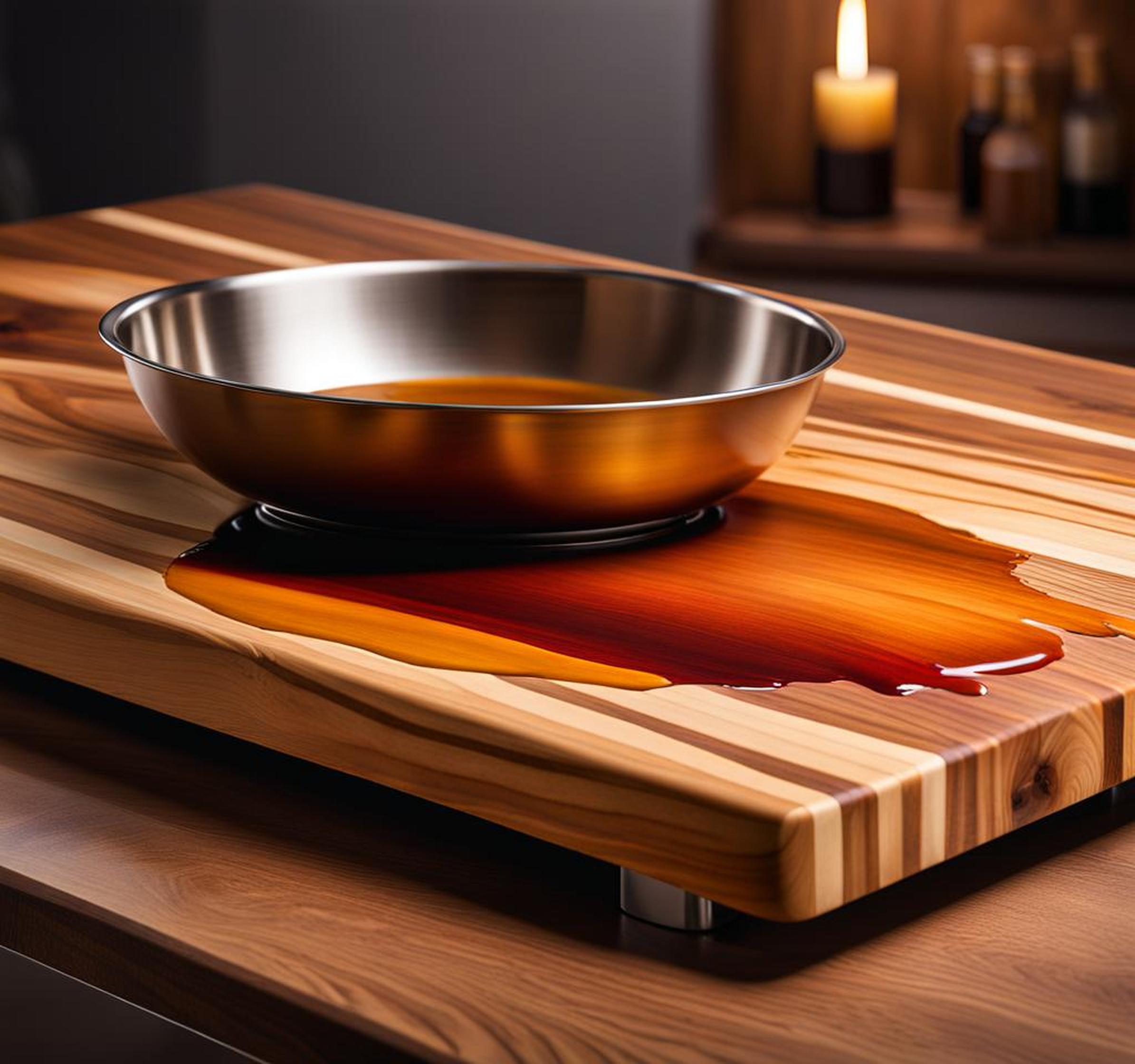Wooden kitchen tools and serving pieces can add warmth and beauty to any home. But without the proper protection, these natural wooden items are susceptible to damage from spills, stains, and wear over time. That’s where food-safe wood stains come in. Applying a non-toxic sealant enhances the natural grain while preventing absorption of liquids.
You’ll learn what makes a stain food-safe, how to choose the right product, proper application tips, and maintenance. We’ll also cover recipes for making your own natural wood treatments. Read on to discover how the right wood stain can safely maintain the pristine beauty of your wooden kitchenware.
Types of Wood Items that Need Food-Safe Staining
Any porous wood that contacts food or drink requires a food-safe finish. Some common examples include:

- Cutting boards
- Butcher blocks
- Wooden bowls
- Wooden spoons/spatulas
- Wooden plates
- Charcuterie/cheese boards
- Wooden rolling pins
- Wooden salad bowls
Without a protective barrier, these wood items can warp, crack, and harbor bacteria over time with exposure to food liquids. A food-safe stain seals the pores to prevent this damage.
Benefits of Using a Food-Safe Wood Stain
Coating your wood objects with a non-toxic sealant offers many advantages:
- Prevents absorption of liquids
- Protects integrity of wood grains
- No worries about chemicals leaching
- Allows the use of beautiful wood grain
- Prevents cracks, splinters
- Extends life of wooden objects
- Maintains the look of new wood
- Seals pores safely
- Gives a light sheen
In short, a food-safe stain lets you safely utilize the natural elegance of wood in the kitchen without concern about damage over time.
What Makes a Wood Stain Food Safe?
For a wood stain to be considered food safe, it must:
- Contain only food-grade ingredients
- Be free of toxic chemicals
- Not leach into food during use
Common food-safe wood stains include:
- Mineral oil
- Beeswax
- Coconut oil
- Walnut oil
- Olive oil
- Lemon oil
Plant-based options using natural waxes and oils make excellent non-toxic wood treatments. Always verify that any product is specifically labeled as food-safe.
Choosing the Best Food-Safe Wood Stain
With many options available, keep the following factors in mind when selecting a food-safe wood stain:
- Consider purpose and type of wood
- Penetrating vs film-forming finishes
- Ease of application
- Desired sheen level
- Frequency of reapplication
- Curing time
- Customer reviews
For items like cutting boards that see daily use, choose a stain that penetrates wood rather than leaving a film and requires frequent reapplication. Read labels closely to ensure the product meets your needs.
Applying a Food-Safe Wood Stain
Once you’ve selected an appropriate food-safe stain, follow these basic steps for application:
- Lightly sand surface
- Wipe away dust
- Apply thin coat along grain
- Allow to penetrate 5-10 minutes
- Wipe away excess
- Allow to cure fully before use
- Follow exact product instructions
Taking care to apply the stain properly will maximize performance and safety. Always let the finish fully cure as directed before using wood items with food.
Reapplication and Maintenance
While a single application creates a protective seal, food-safe stains require reapplication to remain effective. Here are some tips:
- Reapply daily for cutting boards
- Reapply weekly to monthly for other wood items
- Reapply whenever wood appears dry or rough
- Reapply after cleaning
- Follow manufacturer recommended schedule
- Wipe with mild soap and water between applications
- Avoid harsh detergents
With proper care and reapplication, a food-safe wood stain will keep your valued wooden objects looking like new.
Natural Food-Safe Wood Stain Recipes
Want to go the all-natural route? You can whip up your own food-safe wood treatments at home using ingredients like:
- Beeswax, coconut oil, and tea tree essential oil
- Food-grade mineral oil and lemon juice
- Olive oil and vinegars
- Flaxseed oil and citrus juice
When concocting your own wood stain, be sure to only use food-safe, non-toxic ingredients. While convenient, homemade blends may require more frequent applications than commercial products.
Staining Wooden Kitchen Items Without Harsh Chemicals
Hopefully this article has illustrated the beauty and benefits of food-safe wood stains. They allow you to utilize elegant wood objects in the kitchen without worry. A food-safe sealant:
- Protects wood safely
- Enhances natural grain
- Gives peace of mind
- Lets wood’s beauty shine through
- Keeps wood looking pristine
With the right maintenance and reapplication, your cutting boards, spoons, bowls and other wood pieces will maintain their integrity and visual appeal for years of use. Follow our tips to bring out the natural magnificence of wood with a non-toxic food-safe stain.
Wooden kitchen tools and serving ware add warmth and rustic elegance to any home. But left unprotected, continuous exposure to food and liquids can cause wood to deteriorate over time. Applying a food-safe stain seals the pores to prevent stains, cracks, and harboring of bacteria.
Choose a product made only with food-grade ingredients and avoid those with harsh chemicals. Apply the stain properly and reapply frequently for best results. With the right maintenance, a food-safe sealant enhances the natural beauty of wood while allowing you to safely utilize wooden objects in the kitchen for years to come.
